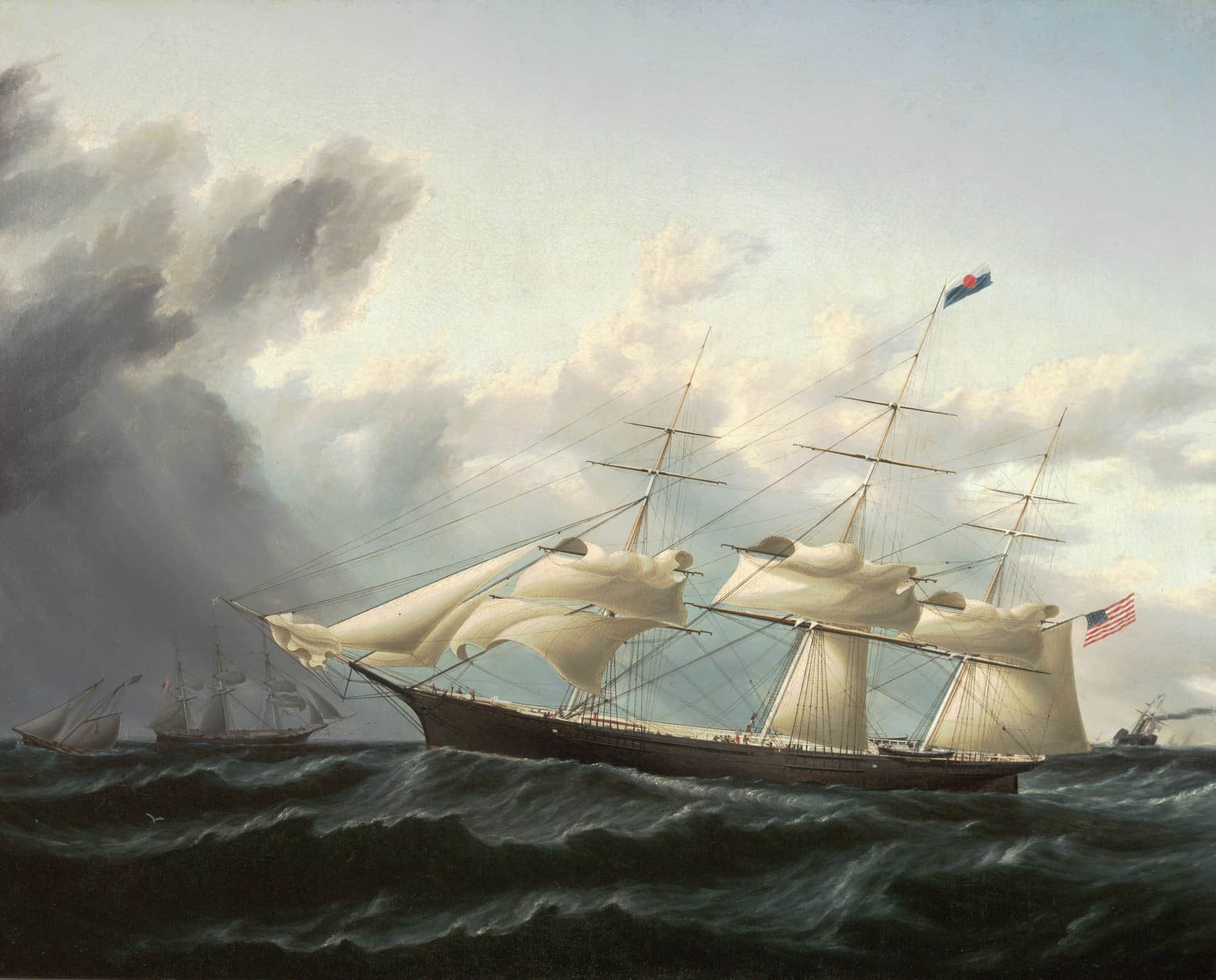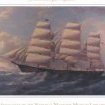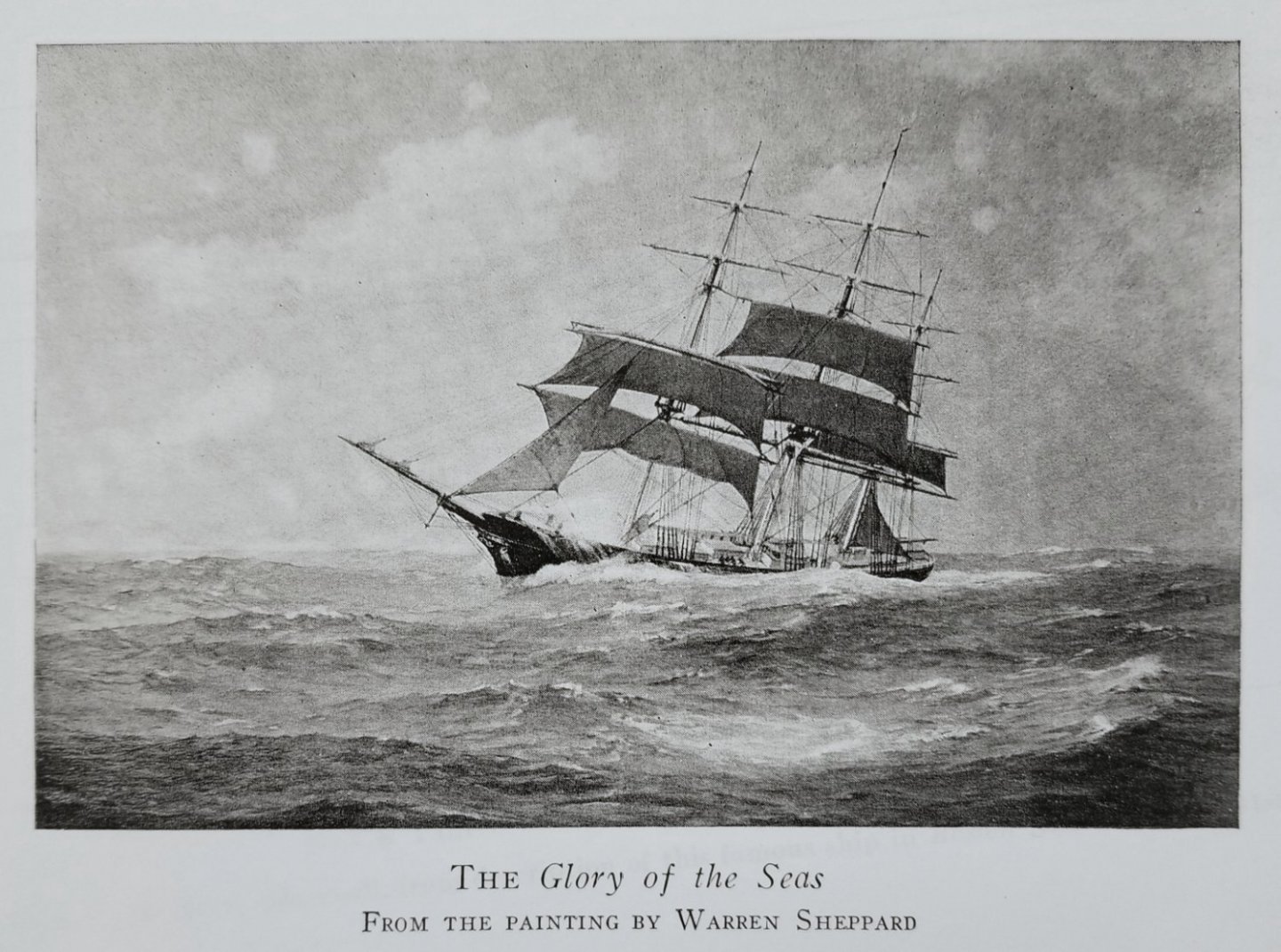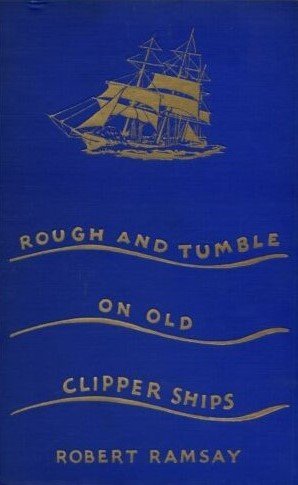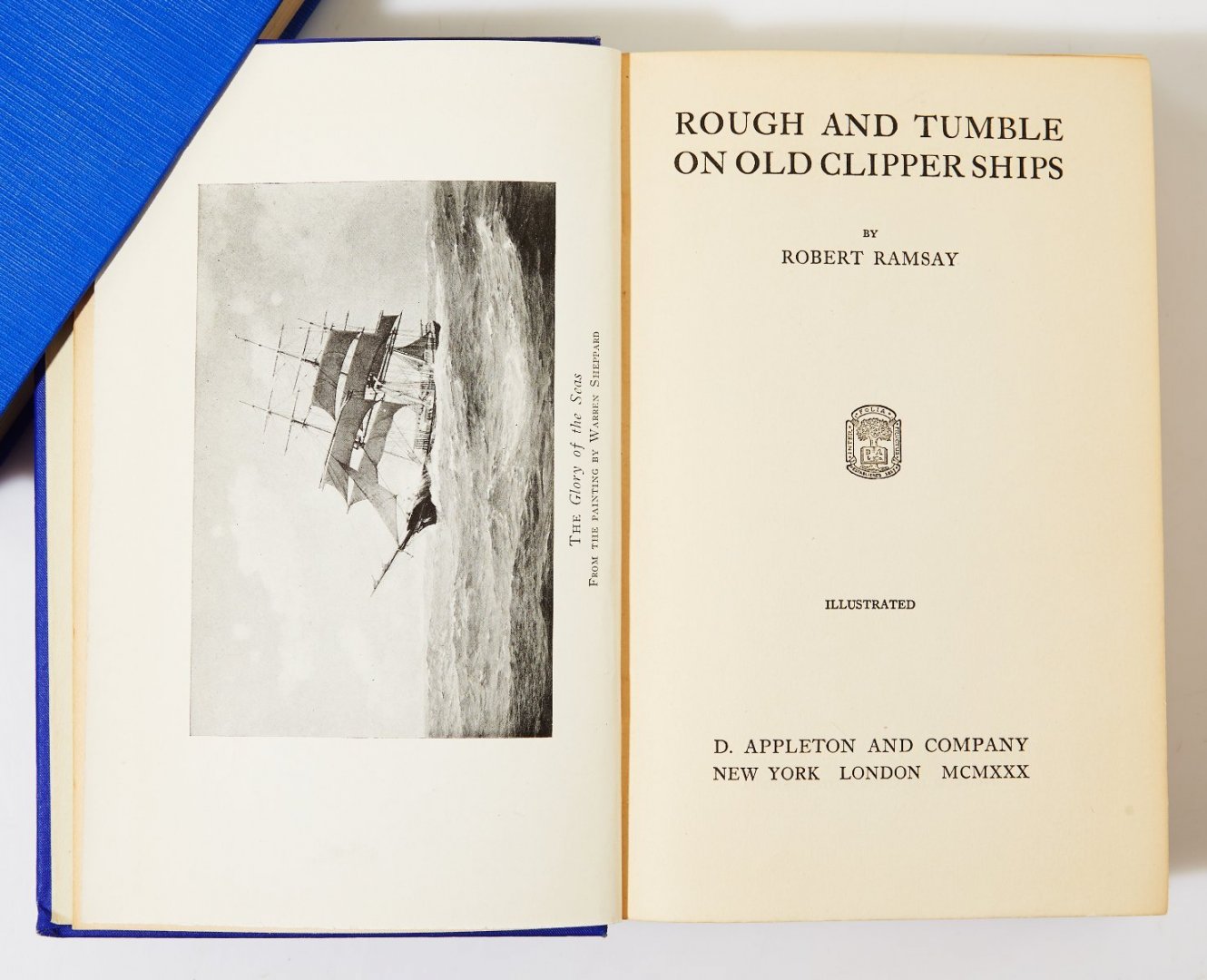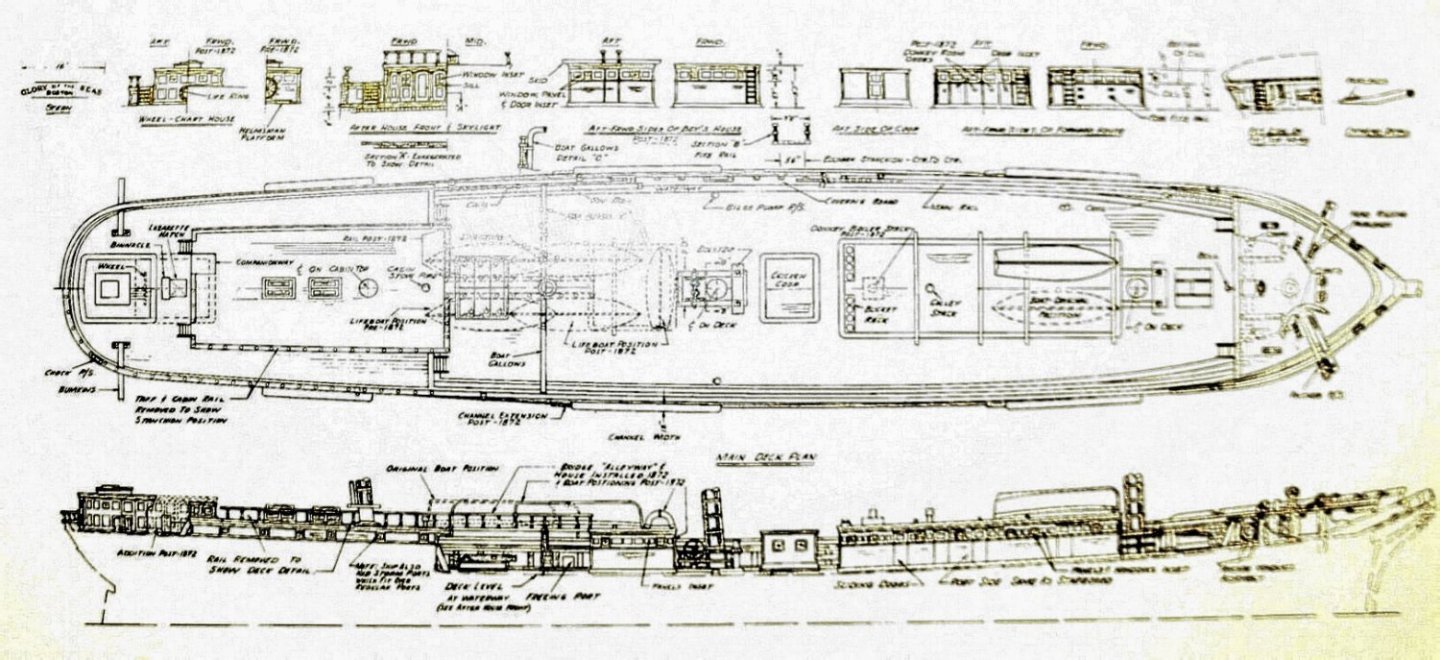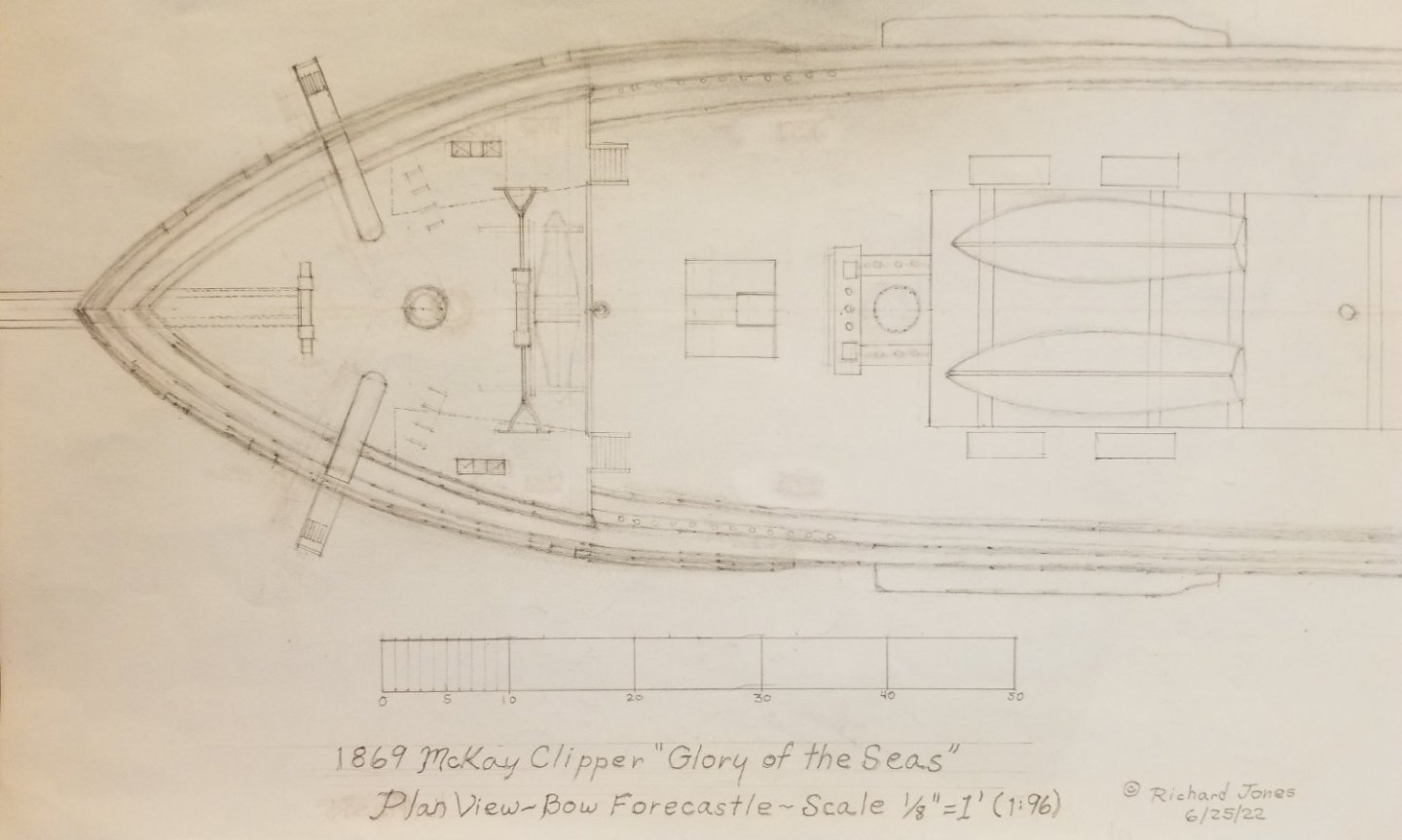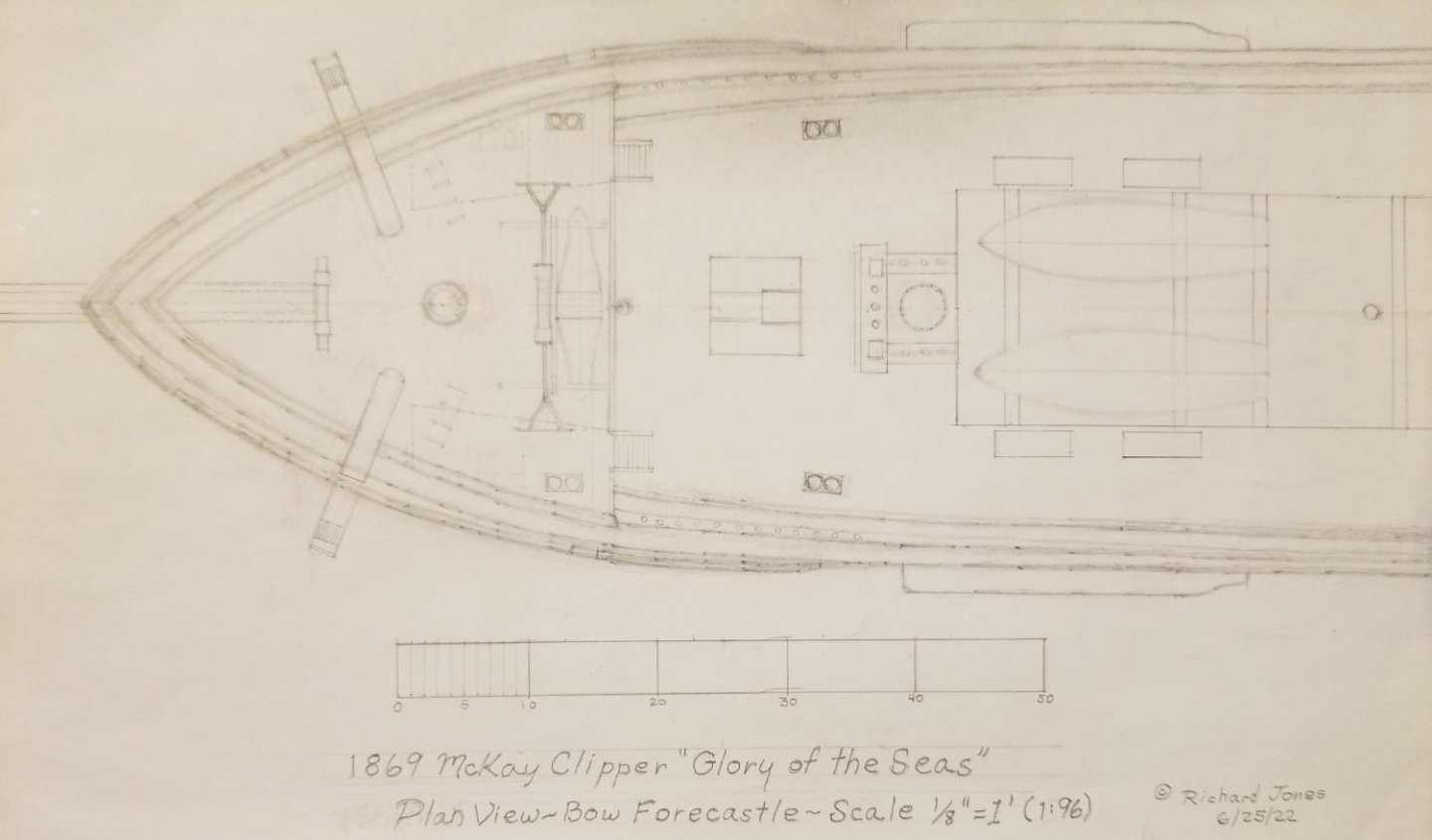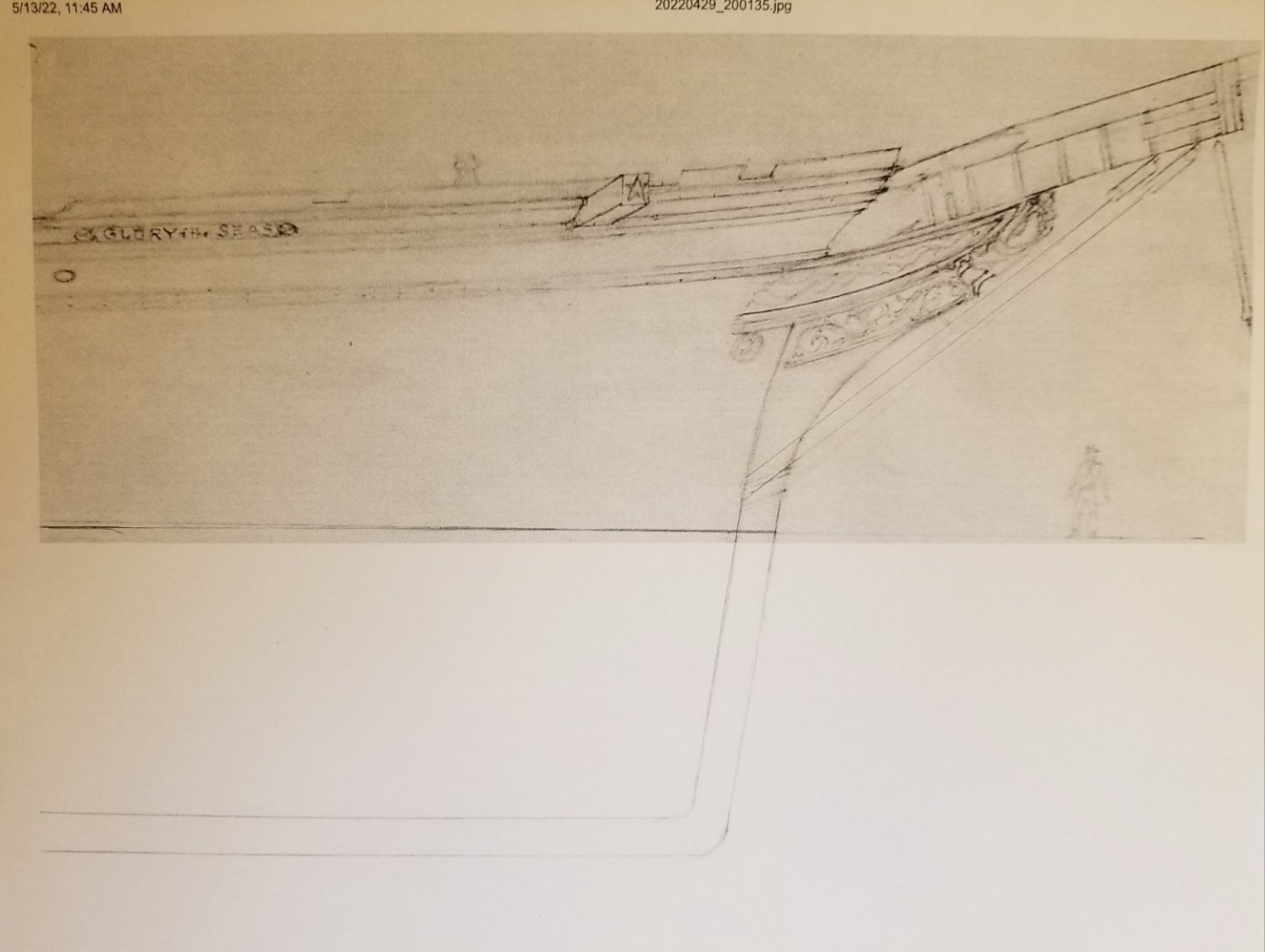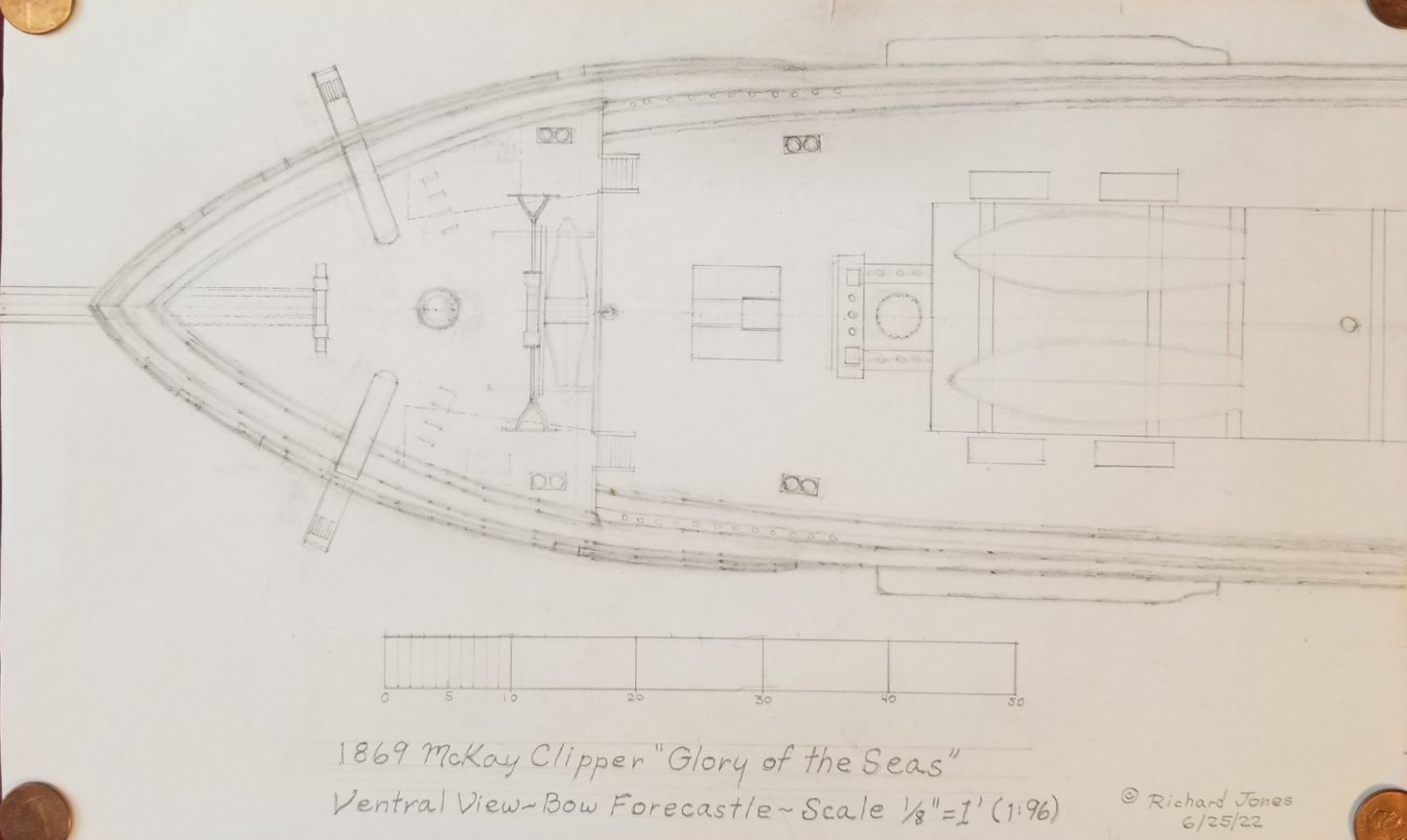-
Posts
2,094 -
Joined
-
Last visited
Content Type
Profiles
Forums
Gallery
Events
Everything posted by ClipperFan
-
Rob, no surprise. I'm pretty sure if we compared lists, our nautical libraries would match almost 100%. By the way, the NRJ editor confirmed he received my article submission. Now it's a matter of waiting....
- 3,560 replies
-
- clipper
- hull model
-
(and 2 more)
Tagged with:
-
Rob, Vladimir, Druxey, et all Here's that neat little book from 1930 written by a veteran Clipper Ship "roughneck" sailor with the beautiful Warren Shepherd artwork as its' frontpiece. I had the title slightly off. It's actually Rough and Tumble on Old Clipper Ships. There's also a dust jacket but it covers a brilliant gold image of Glory on the cover set against a lovely blue hardcover book. Ironically, while the McKay Clipper is featured on the cover and opposite the title page, I do not recall Mr. Ramsay mentioning that he ever served on her. Still it's fun read and gives a genuine first hand authentic, unromanized account of serving on the big American Clipper Ships.
- 3,560 replies
-
- clipper
- hull model
-
(and 2 more)
Tagged with:
-
Rob, Another confusing factor is the f'o'csle height. Both of your models appear to show a 5' height, yet the image of the cabin boy astride Glory's boy's house looking forward seemingly reveals a more comfortable height. Look closely at the base between the fore cabin port side and her port inner bulwark and you'll see a sailor on his hands and knees attending to the ship. The f'o'csle bulwark seems to tower above him. Maybe it's an effect of the man being prone. Regardless, in Duncan MacLean's description of the roomy fore quarters of the Flying Fish, he describes an entrance below deck with the use of a companion. It wouldn't take much, a 3' drop would provide 8' clearance in a 35' space. As for the wooden, rectangular mooring bits, Mike was also emphatic that McKay's second Extreme Clipper Flying Cloud was similarly equipped. That would mean most likely Donald McKay kept his practice of utilizing wooden rectangular mooring bits consistently for at least 18 years. It would be interesting to see if we could find photos of the USS Essex to see what type of mooring bits she had. When it comes to your foremast rigging procedure. I wouldn't have a clue. However, knowing the critical nature of those lines, I would firmly believe that if a relatively smaller mast like the mizzen had doubled lines, than a substantially larger mast like a foremast would have such rigging too.
- 3,560 replies
-
- clipper
- hull model
-
(and 2 more)
Tagged with:
-
Druxey, And now we wait.... As Tom Petty famously sang "the waiting is the hardest part".... As for acknowledging your input, I firmly believe in giving credit where credit is due. You most certainly deserve it and of course, you're welcome!
- 3,560 replies
-
- clipper
- hull model
-
(and 2 more)
Tagged with:
-
Glen McGuire, Thanks for the generous compliment. I'm glad you enjoyed reading the manuscript. And to think my initial fear was finding enough information to support enough pages for an article. In hindsight, what I still find personally fascinating is how those concerns about how to describe our journey of discovery were entirely unfounded. Once I got out of my own way, the article literally wrote itself. It's particularly gratifying that you appreciated the exacting details our research took us into, such that even examining Glory's Grecian Goddess Athena figurehead led to our amazing discoveries. In addition, while Rob, Vlad and I were committed to realizing Glory of the Seas in as precise details possible, the granularity of our research wouldn't have been possible without the intercession of Arina "theauthorsdaughter" who directly involved her famous dad Michael Mjelde. His personal involvement, encouragement and generous collaboration in making his vault of amazing photos available to us, allowed our group to take the research to a whole new level.
- 3,560 replies
-
- clipper
- hull model
-
(and 2 more)
Tagged with:
-
Rob, While I too want to see the rectangular, wooden mooring bits, I have full confidence in the word of Michael Mjelde. If he said he's seen those items, his statement is good enough for me. I took another look at his page 215 Appendix B: Main Deck Plan from the 1997 book Clipper Ship Captain. They're a little hard to see but just abaft the capstan are two tall rectangular mooring bits, which align precisely with the Plan View immediately above. What I find even more fascinating is that Mike says the Flying Cloud was similarly equipped. How he knows that is quite interesting.
- 3,560 replies
-
- clipper
- hull model
-
(and 2 more)
Tagged with:
-
Rob, Vladimir, Druxey, Banyan, et all, Here for everyone to read is my manuscript and Appendix I as submitted today to Paul E. Fontenoy, Editor of the Nautical Research Journal. How or if it will be published in the Winter 2022 issue is yet to be decided. However, having never attempted anything like this before, it's thrilling just to have gotten this far. I want to publicly acknowledge the invaluable assistance of Druxey my silent, behind the scenes editor. He very patiently waded through my raw manuscript and especially when it came to my notorious penchant for "run-on" sentences, expertly guided me through the process of wrestling them under control. Anyone familiar with the brilliant tv show CSI will recognize this analogy. When I first received the initial revised manuscript back, there were so many red lines, it immediately reminded me of a bloody scene from that investigative procedural. Ha, ha! Unfortunately, time ran out before I could implement every single one of Druxey's insightful recommendations. However, meeting the July 1st deadline was of paramount importance and I felt that as written and illustrated, it was sufficiently ready to send it in. Anyways, knowing to some degree the restrictive nature of publications, I felt this group would appreciate seeing the entire manuscript, as submitted. 05-06-22 Reconstructing McKay Clipper 'Glory of the Seas' - Appendix I final.docx Reconstructing McKay Clipper 'Glory of the Seas' REV DA5 REV.docx
- 3,560 replies
-
- clipper
- hull model
-
(and 2 more)
Tagged with:
-
Rob, Vladimir, Druxey, et all, It's done! I just emailed the article and appendix to Paul E. Fortenoy, Editor Nautical Research Journal. I'll give updates as I get a response from him. Meanwhile, trusting Mike's last email, I revised the Glory of the Seas plan view to reflect that her mooring bits were actually wooden rectangles and not standard wrought iron as we first thought. Here's that revised illustration.
- 3,560 replies
-
- clipper
- hull model
-
(and 2 more)
Tagged with:
-
- 3,560 replies
-
- clipper
- hull model
-
(and 2 more)
Tagged with:
-
Rob, I don't yet do Apple Pay but I have an established PayPal account.
- 3,560 replies
-
- clipper
- hull model
-
(and 2 more)
Tagged with:
-
Rob, Just as soon as Mike sends them, I'll share them here. Thanks for understanding about the print expenses. Rest assured, costs are not being "padded." This is truly a "non-profit" endeavor. The article is 100% done now. I'm just waiting to see if Mike has those wooden mooring bit pics and to see if he has any further input on the interesting double Decker Wheelhouse ventilator. Either way, this Thursday is submission day.
- 3,560 replies
-
- clipper
- hull model
-
(and 2 more)
Tagged with:
-
Rob, Vladimir, Druxey, et all: Based on Druxey's sensible advice, I went to Oddo Printing here in Torrington and got a much clearer result, which you can see here. I also revised the description of the overhead view of Glory's bow and f'o'csle to "plan view." Mike told me that the mooring bits on her f'o'csle were actually wooden rectangular with metal trim at the corners. He has photos and said he'll share them with us. I have until this Thursday to meet the July 1st deadline to wait. Now I have a bit of a quandry. Better prints run $15.00 each. I already have plenty of the $3.00 Staples prints ready to share and can absorb expenses for those which are pretty decent. Sending out a bunch of prints at $15.00 a piece gets to be quite expensive. So guys, let me who would appreciate getting a print with the finer details.
- 3,560 replies
-
- clipper
- hull model
-
(and 2 more)
Tagged with:
-
Rob, Vladimir, Druxey, Banyan et all, Here are two Glory of the Seas hull images I recently shared with Michael Mjelde. Interestingly, his only comment was that both bits on her forecastle were constructed of wood and rectangular, with metal corners. He intends to send me a photo. At this point I hadn't planned on including the ventral bow forecastle view but I've reconsidered and now will do so. Meanwhile I've also included my conceptual sketch of the most likely appearance of her rear wheelhouse split-level slanting ventilator. Now that I've heard back from Mike about a small detail like her forecastle bits, I'm also going to send my interpretation of this fascinating structure too and ask if he has any images that either confirm or refute this interpretation.
- 3,560 replies
-
- clipper
- hull model
-
(and 2 more)
Tagged with:
-
Jared, Nice way to "bury the lead". Congratulations on your somewhat recent wedding! I hope you are as happy and fulfilled with your lovely bride as I have been with Peggy my wife and best friend. Just remember "happy wife, happy life." It's true! I'm looking forward to eventually seeing progress on your own project.
- 602 replies
-
- Flying Fish
- Model Shipways
-
(and 2 more)
Tagged with:
-
Rob, Glorious, glorious! Your stern truly reflects the stunning beauty of Glory of the Seas. Very nicely done. So lovely.
- 3,560 replies
-
- clipper
- hull model
-
(and 2 more)
Tagged with:
-
Rob, Thanks for the generous compliment. I think the work of this group will revolutionize the understanding of the authentic beauty of McKay's Clipper Glory of the Seas. In addition, I honestly believe that the models that you and Vladimir are constructing are finally, for the first time ever, reproducing faithful replicas of a McKay Clipper.
- 3,560 replies
-
- clipper
- hull model
-
(and 2 more)
Tagged with:
-
Rob, Vladimir, Druxey, et all: Staples came through for me and properly realigned the print scanned yesterday. Attentive people will notice it's a little narrower now since it would have had white spaces at the top of each mast due to reorientation to level. At this point, I'll probably do 10 prints, so I'll have a few extra. This will be on decent ordinary paper. It's a premium of $20.00 to get the stiffer poster type paper. To me it's not worth that much more, since even this scan still blurs some of the finer details.
- 3,560 replies
-
- clipper
- hull model
-
(and 2 more)
Tagged with:
-
Rob, Vlad, Druxey, Banyan et all, In final preperation for the very soon to be submitted Nautical Research Journal article, I've corrected all minor mistakes and darkened the outline of my 11" x 43" 1:96th scale Clipper Glory of the Seas sketch. The first effort of Staples to scan the original came out crooked, so I will probably need to get it scanned again. Meanwhile I took a picture of it and did my best to correct the mistake as well as convert it to a jpg image to share. Once I get this to the point where it's exactly right, I can make as many prints as I want for $3.00 each. I plan on sending 3 to Mike (one for him, another for Arina and a third for Ron Haug) then one each for Ron and Vlad. Druxey, I'm planning on sending you one, so I'll need your address, unless you prefer not. That leaves the current count at 7 (including 1 for myself) Pat or if anyone else wants one, just send me a message. The first image shared here still isn't level but shows the entire sketch. I did finally get it level but just slightly cut off the very tip of the jibboom. Rest assured, the one going into the magazine article most definitely will be level and complete.
- 3,560 replies
-
- clipper
- hull model
-
(and 2 more)
Tagged with:
-
Rob, A factor of your construction process that I find a bit confusing has to do with the structural reinforcement of the foremast tied into the bow and bowsprit. I would think that you would have normally chosen to install this significant spar for the added strength provided to the support of both the main and mizzen mast. I can understand not mounting the yardarms on the foremast but to not step the foremast itself and tying this powerful structural component to the bow as well as the bowsprit too, with the additional tension provided by that installation is what I wonder about. I would be concerned about possibly over tensioning the rigging your doing now once the foremast with its yards is eventually installed and rigged. Just curious as to your rigging process choice. Either way, as you proceed, your Glory of the Seas is shaping up to be the most spectacular, museum quality, faithfully precise replica ever produced. I am in awe of your meticulous rigging process.
- 3,560 replies
-
- clipper
- hull model
-
(and 2 more)
Tagged with:
-
George, Thanks for sharing your topmast build process in such specific detail. Addition of brass reinforcement which will be well disguised is a brilliant solution for such delicate trestle tree work. Great artisan quality work!
- 602 replies
-
- Flying Fish
- Model Shipways
-
(and 2 more)
Tagged with:
-
Rob, As I view the ever growing gossamer labyrinth of rigging on your spectacular Clipper Glory of the Seas, it occured to me that so far you have yet to run any of the fore and aft block & tackle lines that would normally turn these massive yards into the wind. This must be part of your deliberate plan to address all of the other lines you have already rigged, basically supporting the vertical movement of the yards. It also means she will be an even more impressive vessel with these seemingly endless, potentially bewildering lines. From what you so masterfully described of your process so far, it sounds like you're working from the top down, with the highest lines belaying further out and lower lines belaying closer in. I also repeat my sincere hope that you're maintaining some sort of organizing chart of this amazing rigging process. I'm sure Vlad would echo this sentiment. Continue working your magic!
- 3,560 replies
-
- clipper
- hull model
-
(and 2 more)
Tagged with:
-
Rob, Just magnificent work! I remember thinking when I saw the stunning height of her mizzen mast, how tall that structure looked. Now, compared to her fore and main mast, the mizzen looks positively diminutive! All I can think of, is how this must have been such a mind bending experience to actually view McKay's Clipper Glory of the Seas in person! Simply amazing...
- 3,560 replies
-
- clipper
- hull model
-
(and 2 more)
Tagged with:
-
Rob, Thanks. Of all reconstructions I've done so far, this has been the most challenging. I do know though that, since I've seen such intricate, antique woodwork on large pieces of furniture, this approaches those works. It will be interesting to see how this actually looks on your model.
- 3,560 replies
-
- clipper
- hull model
-
(and 2 more)
Tagged with:
-
Rob, Vladimir, Druxey, Pat It made my eyes blurry at times but I finally finished the Stern scrollwork arch over Glory of the Seas. Usually such work is done by tracing one side reversing and repeating it on the other side. I just freehand drew the right Starboard side to visually match the left Port one. Since I drew the Port side first, my suggestion would be to use it as your source and then reverse it to make the opposite side match exactly.
- 3,560 replies
-
- clipper
- hull model
-
(and 2 more)
Tagged with:
-
Vladimir, You're welcome. I'm going to finish Glory's Stern scrollwork, Mike's upper forecastle view and darkening the large 1:96 scale hull drawing, which is now as accurate as it can be made. Then it all goes to NRJ for publication.
- 3,560 replies
-
- clipper
- hull model
-
(and 2 more)
Tagged with:
About us
Modelshipworld - Advancing Ship Modeling through Research
SSL Secured
Your security is important for us so this Website is SSL-Secured
NRG Mailing Address
Nautical Research Guild
237 South Lincoln Street
Westmont IL, 60559-1917
Model Ship World ® and the MSW logo are Registered Trademarks, and belong to the Nautical Research Guild (United States Patent and Trademark Office: No. 6,929,264 & No. 6,929,274, registered Dec. 20, 2022)
Helpful Links
About the NRG
If you enjoy building ship models that are historically accurate as well as beautiful, then The Nautical Research Guild (NRG) is just right for you.
The Guild is a non-profit educational organization whose mission is to “Advance Ship Modeling Through Research”. We provide support to our members in their efforts to raise the quality of their model ships.
The Nautical Research Guild has published our world-renowned quarterly magazine, The Nautical Research Journal, since 1955. The pages of the Journal are full of articles by accomplished ship modelers who show you how they create those exquisite details on their models, and by maritime historians who show you the correct details to build. The Journal is available in both print and digital editions. Go to the NRG web site (www.thenrg.org) to download a complimentary digital copy of the Journal. The NRG also publishes plan sets, books and compilations of back issues of the Journal and the former Ships in Scale and Model Ship Builder magazines.

